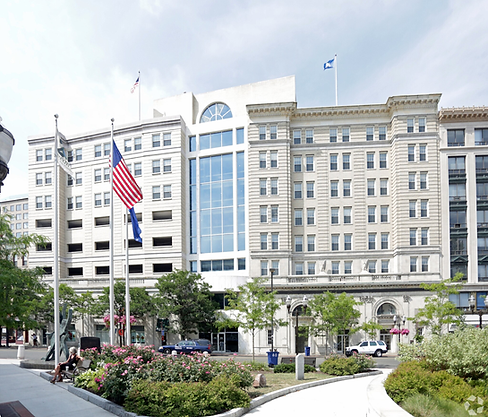




The History of
300 Main Street
300 Main Street stands as one of Stamford’s enduring architectural and civic landmarks. Completed in 1914 as the home of the Stamford Trust Company, the building was designed by Henry J. Hardenbergh to embody strength, stability, and prosperity—qualities its founders wished to convey to the growing city.
At the time of its construction, Stamford was transitioning from a small industrial hub to a modern commercial center. Banking institutions were symbols of civic pride, and Stamford Trust spared no expense in creating a headquarters worthy of its mission. The building’s classical façade, grand double-height banking hall, and ornate detailing reflected both the Beaux-Arts and early neoclassical styles that were popular among financial institutions of the era.
Inside, the space featured marble floors, decorative plasterwork, and a massive bank vault with steel doors that remain in place today. For decades, the vault safeguarded not only currency but also jewelry, deeds, and other valuables for Stamford’s most prominent citizens and businesses.
In 1928, a major expansion added additional office and operational space, reflecting the bank’s growth during a period of regional economic prosperity. This addition complemented the original design while increasing the building’s footprint and capacity.
In 1983, another expansion modernized certain facilities and incorporated updated infrastructure, allowing the building to adapt to new commercial needs while maintaining its historic character.
Through much of the 20th century, 300 Main Street was one of the centers of financial life in Stamford. As the city modernized, banking operations eventually relocated, and the building entered a period of underutilization. Yet, despite changes in ownership and use, its architectural integrity remained largely intact—a testament to the craftsmanship of its original builders.
Upon completion of The Teller Hotel, 300 Main Street will once again stand at the heart of Stamford’s civic and social life—its marble halls, imposing vault doors, and stately presence reimagined as spaces for gathering, dining, and celebration. The building’s legacy as a place of trust and connection continues, just in a new form.
